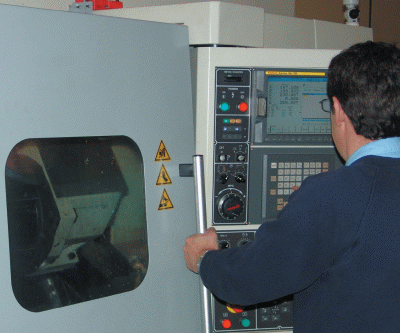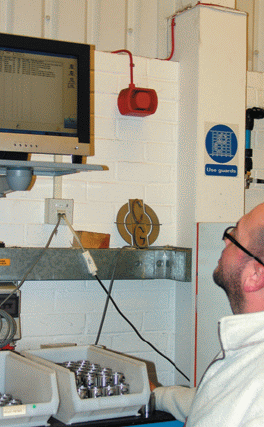 Since implementing Seiki Systems real-time graphical scheduling software, the Creative Group has cut lead times and improved its on-time delivery to customers, as well as effectively increasing its production capacity without purchasing additional manufacturing equipment
Since implementing Seiki Systems real-time graphical scheduling software, the Creative Group has cut lead times and improved its on-time delivery to customers, as well as effectively increasing its production capacity without purchasing additional manufacturing equipment
Within its 11,500 square ft facility in West Sussex, the Creative Group employs 28 highly skilled staff in a lean manufacturing environment to generate a turnover of £2.8 million. The company initially supported the instrumentation industry. This was then augmented with the introduction of parts and assemblies such as coupling, joints and valves for the vacuum industry.
The Creative Group has a reputation as a solution provider, getting many of the jobs that other suppliers and subcontract facilities do not want to carry out. “Many customers give us work they don’t want to do internally, as it may affect their core business. Our reputation is based on handling difficult jobs and getting them right,” explains operations manager, Mike Dean.
The company’s customer base is spread evenly across industry sectors, including medical which accounts for 22 per cent, aerospace at 23 per cent, vacuum and pressure instrumentation also at 23 per cent, 10 per cent each for semi conductor and process instrumentation sectors, and the remaining is general engineering.
While this spread provides some protection against demand fluctuations it comes with its own set of problems, for example batch sizes range typically between one and 50 and rarely go
 over 200. Production manager, Kevin Williams, says: “The high variety of complex work going through the workshop did cause problems for us. We had traditionally used spreadsheets to plan production, but even the best spreadsheet in the world could only cover two weeks ahead, anything longer and there are far too many variables to consider. We were spending up to 80 hours per week with production planning and still only managed on-time delivery of 52 per cent.”
over 200. Production manager, Kevin Williams, says: “The high variety of complex work going through the workshop did cause problems for us. We had traditionally used spreadsheets to plan production, but even the best spreadsheet in the world could only cover two weeks ahead, anything longer and there are far too many variables to consider. We were spending up to 80 hours per week with production planning and still only managed on-time delivery of 52 per cent.”
At the start of 2010, Seiki Systems scheduling software was initially installed, but it exposed too many problems in the business in terms of inaccurate legacy data. The brave decision was made to turn off the software to correct the background data before going ‘live’ again with Seiki Systems. In October 2010 the software went live for everybody to see and use – from the top floor to the shop floor.
Since then the improvements have been dramatic. “As a business tool Seiki Systems has exposed the opportunities for improvement and has given the top level management the time to focus on things that can increase our capacity, making us more efficient. This is reflected by significant additional orders from our customers because we are now 95 per cent on time with deliveries,” says Williams.
With Progress Plus MRP software already in use across the company it was vital the new scheduling software could communicate accurately. “For us, Progress Plus is the right  tool to run the administration of the business,” Dean points out: “Many people get confused and think that the MRP system runs the whole business, it doesn’t. You need a proper scheduling system to run the production of the business. Seiki Systems provides that link to the shop floor.”
tool to run the administration of the business,” Dean points out: “Many people get confused and think that the MRP system runs the whole business, it doesn’t. You need a proper scheduling system to run the production of the business. Seiki Systems provides that link to the shop floor.”
Seiki Systems allows the company to predict problems and also load potential customer capacity for jobs that have a high probability of coming in. Also, if a number of jobs have been quoted for using a standard lead time and the load on the workshop increases, the detailed capacity planning in the software provides us with accurate delivery forecasts.
Dean says: “Traditionally we only saw six to 10 weeks ahead. Now we have changed the sales operation to fulfil at least 50 per cent of our order book a year ahead. This enables us to plan better and know where we stand, and Seiki Systems helps us manage the stock of 750 plus items which operate within the kanban systems.”
Williams says: “What we have to focus on is what we are selling, and that is time. It has to be sold in the most profitable manner possible. What Seiki Systems does is give us a reflection of the time we sell in graphical format. How we use and manipulate that time enables us to be more efficient and it frees up capacity to sell.”

